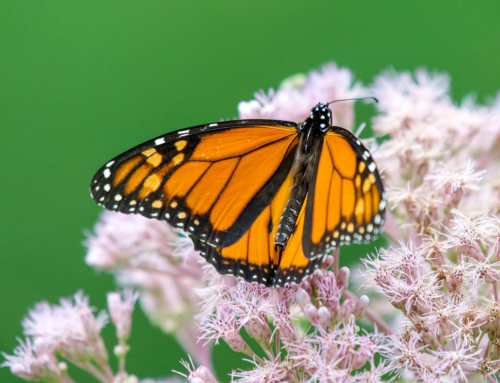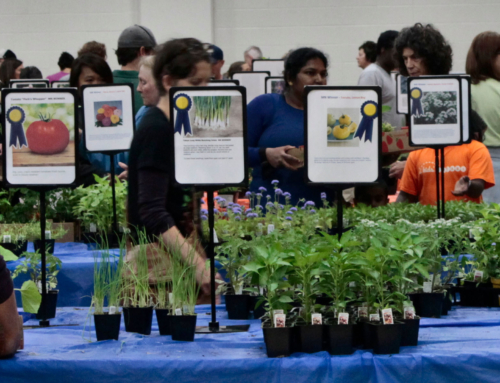By Larry Cipolla, Hennepin County Master Gardener
There are many things you could know. Where do you start? Let’s keep it simple and basic so you can realize as much success as possible this year.
First, you need to build a foundation for your veggies and herbs. You start with the soil. But what’s in your soil and how do you know? Get a soil test from the University of Minnesota. For $15 the soil test will tell you what the nutritional levels are in your garden. That is, what level of Nitrogen (essential for leaf growth), Phosphorous (essential for flower, fruit production), and Potassium (for strong stems and overall health of the plant) is in your soil? Information from the soil test is located at http://soiltest.cfans.umn.edu/.
Is there enough organic matter in your soil? Not enough? Add composted manure, which is available at your favorite garden center. The same soil test will let you know that. It will identify the pH level. If your pH number is low, your soil is acidic and you may need to add hydrated lime to “sweeten” it. Just sprinkle it on the ground. Too high a number means your soil is too alkaline and you may need to add peat or pine needles to lower it.
A soil test will also identify what type of fertilizer, if any, you need and in what amount. All fertilizer includes at least three elements—Nitrogen (N), Phosphorous (P), and Potassium (K). Each element is expressed as a number and that number correlates to the number of pounds the element has in a 100 pound bag of fertilizer. So a balanced fertilizer such as 10-10-10 means there are 10 pounds of N-P-K per 100 pounds.
Second, keep it simple the first year. Plant varieties of vegetables and herbs that you like to eat, but don’t go overboard. Plant what I call psychological reinforcers or ego-boosters. These are varieties that mature quickly and take a minimum amount of care and maintenance. They can make you look like a seasoned gardener.
Some examples of these quickies include radishes, lettuces, beets (and beet greens), turnips, chards, spinach, broccoli raab, kohlrabi, onion sets, and some Asian greens such as kailan and choy sam. Basil is an easy herb to grow as is lemon grass and lemon verbena. Mint is very easy to grow, but it can take over your garden. Plant it in a container!
Are you feeling lucky and think you can push the envelope the first year? Plant a few tomatoes (cherry-type are the easiest to grow), peppers, bush beans, and maybe some bush cucumbers. As you gain experience and confidence, consider planting summer and winter squash, peas, potatoes (Irish and Sweet), and maybe a hot pepper plant or two.
Third, how large a garden do you want? If you are going to hand-dig your garden, make it as large as your body tells you. When you start to ache from digging and turning over the soil, stop! After digging, comes raking to smooth the surface. You can always expand your garden in the fall or early next year.
Fourth, you say you don’t have a “dirt garden?” Do you have a deck? A balcony? A patio? Can you install hooks in a roof overhang? Think containers. Place containers on your deck, balcony, or patio or containers that you can hang from the side of your condo or apartment. You can grow any vegetable or herb in a container, including corn. Use a 6” container for most herbs. Depending on the variety, tomatoes require the equivalent of a 5-gallon container. Only use potting soil and some composted material in a container. Never use soil from your yard. It contains weed seeds, insect eggs, and soil borne diseases.
How to avoid some common mistakes
- Start with a plan. What do you want to grow? What do you like to eat? How many radishes do you really want?
- Do you have enough sun to grow tomatoes or peppers? Both need at least 6 hours of sun a day. Plants that tolerate less sun include most leaf vegetables, such as lettuces, beet greens, chards, chicory, and spinach.
- Read the directions on your seed packet or plant label. There is a lot of information that will tell you how to plant and grow the veggie—how deep to plant it, how much spacing between plants and between rows, how much sun does it require, when to harvest it, and so on.
- Failure to read and follow the directions on any insecticide or herbicide you purchase can be a major health problem for you, your family, and the environment. We use and consume too many chemicals as it is.
- Folks tend to get panicky when they see critters crawling on their plants. There are many beneficial insects. They eat the bad bugs. Spraying insecticides can kill the good bugs. Hand-pick them instead of reaching for the can of chemicals. Some of the good bug critters include bees, hornets, wasps, lacewings, ladybugs, and a wide range of ground beetles. All are carnivorous. They do not eat your plants.
- Most people apply too much fertilizer to their lawn (at best you only need two applications per season—spring and fall) and to their garden. You do not need to fertilizer every two weeks. Once or twice a season should be sufficient. Typically you do not need fertilizer after the first of August. And remember whenever there is a thunder-boomer you are getting free fertilizer—Nitrogen is released during a lightening storm.
- Folks tend to water their plants when it is convenient to them, rather than when the plants need it. It is best to water early in the morning. This gives the foliage time to dry as the sun rises. Early morning watering keeps foliar diseases to a minimum. Compared to overhead watering, drip irrigation can conserve water and minimize foliar diseases. However, the benefits are similar when you overhead-water during the early morning hours.
- Folks sometimes forget that rain is an example of overhead watering. Overhead watering is not bad when you do it early.
Gardening does not have to be work! Keep it simple. Keep it manageable. Read and follow directions (yes, gentlemen that means you!). Use your hand, not the can, to remove the bad bugs. Whether you are gardening at home or in a community garden, gardening can bring generations together. Grandparents, children, and grandchildren can all take part. Involve the kiddies so they understand that not all food comes from a can or package.
Raising some of your own veggies is healthier for you. You not only get beneficial exercise, you also get fresh, chemical-free food. Taste the difference and have fun.




